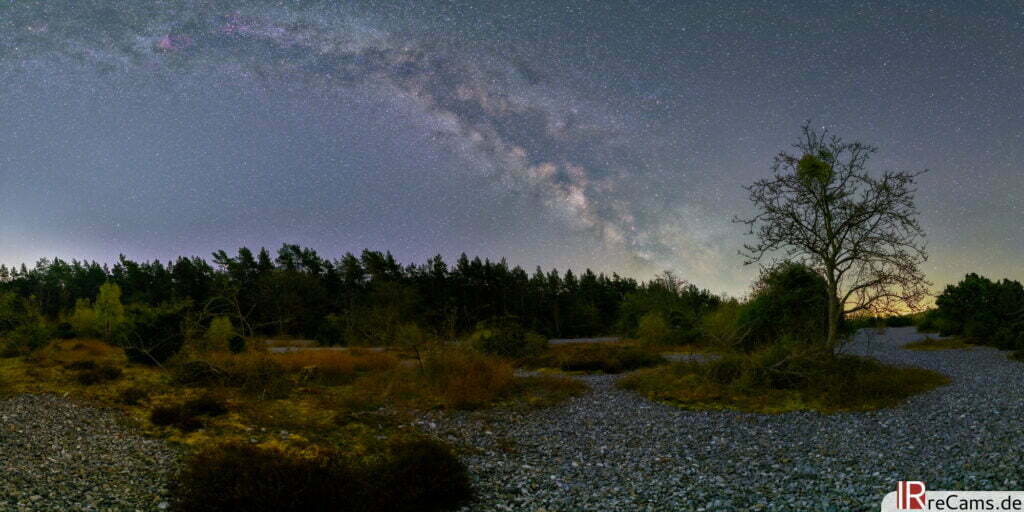Ihr Warenkorb ist derzeit leer!
Astro Filter: Photographing stars at night with a modified camera
Infrared Photography is known to show familiar landscapes in an abstract, artistic and new light. In Astrophotography or Star Photography, however, it is more a matter of portraying the objects as "naturally" as possible, just as we see them. This is especially important for night landscapes, where there is also an exciting foreground to photograph.

Advantages of an astromodified camera
Modern digital cameras have excellent sensitivity combined with good noise performance and high dynamic range. Yes, you can even capture the starry sky in acceptable quality with your smartphone. So what on earth is there to improve in this kind of photography? To answer this question, we need to talk about the areas of the spectrum that we can no longer see with a normal camera.
What is H-Alpha radiation?
A shining object emits light. This can be a candle, an LED lamp or a star. But the light is not the same: depending on the light source, it differs in its spectrum - simply put, in the distribution of colors. What we perceive as white light is actually a mixture of all spectral colors. What a spectrum looks like, i.e. which colors it contains, depends, among other things, on the composition of the light source at the atomic level. By far the most common atom in the universe is hydrogen (symbol H), and now it gets interesting again.
When hydrogen is excited (e.g. by heat or radiation) it emits light. Not white light, but very discrete wavelengths (i.e. colors). The strongest color is the so-called H-alpha radiation - it has a wavelength of exactly 656.28 nanometers (nm). This wavelength corresponds to a deep red in the spectrum visible to us. While we can just barely see this wavelength with our eyes, most digital cameras unfortunately have difficulty doing so.
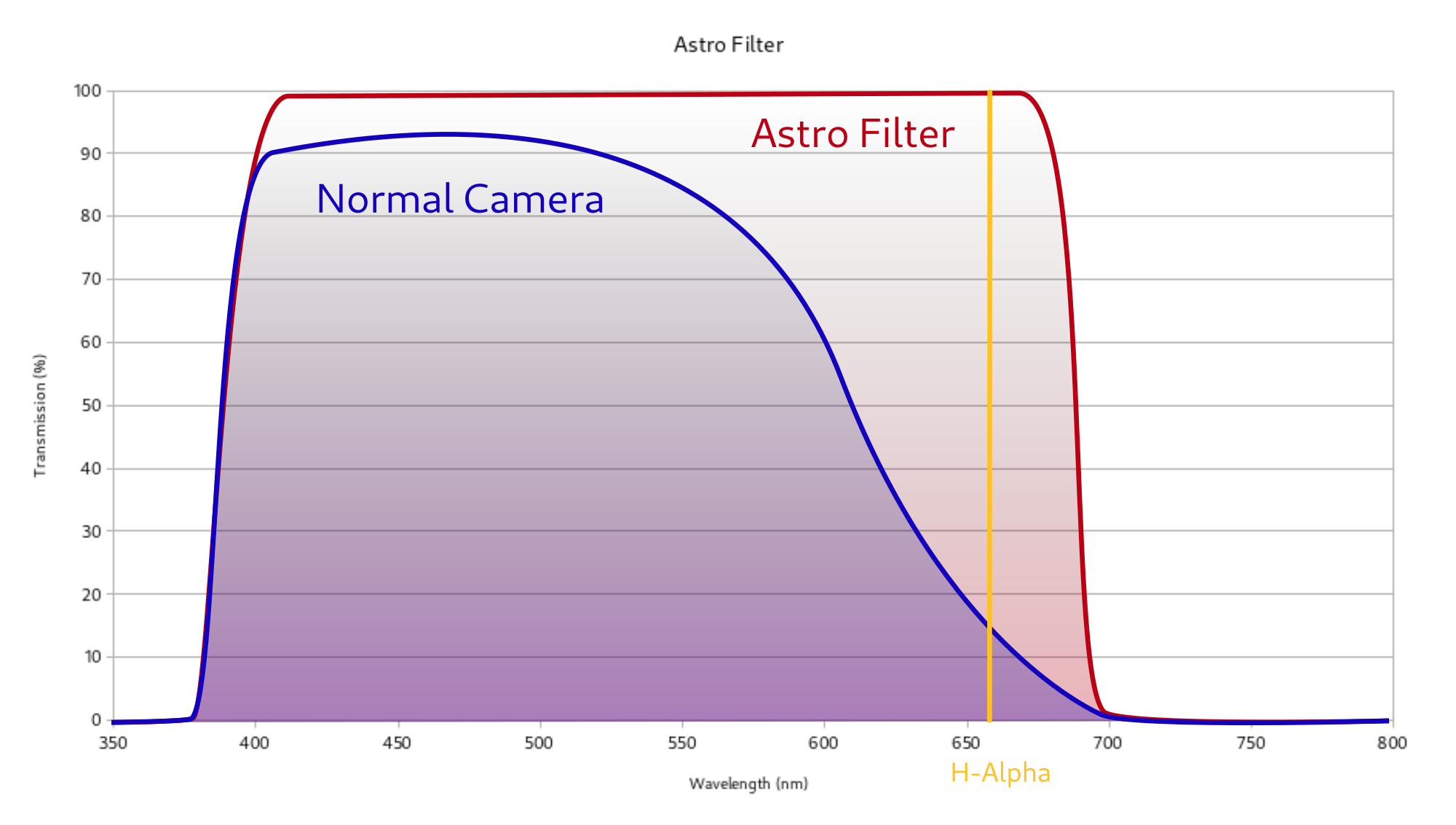
Astrophotography with a normal camera
Depending on the manufacturer and model, the H-alpha sensitivity of a digital camera is only between 10 and 30 %, typically around 15 %. This makes these spectral ranges practically invisible in the already very dark night. The reason for this is the UV/IR blocking filter (also called Hotmirror), which is installed by the manufacturers directly in front of the sensor. This is necessary to ensure good color reproduction during the day, but is just as much a thorn in the side of Astro photographers as it is for Infrared photographers. Therefore, the blocking filter is removed during astromodification and replaced by a filter that allows the H-alpha radiation to pass.
Astromodified camera vs Normal camera
Even though the proportion of hydrogen in the universe is very large, the distribution is not uniform. There are objects in the night sky that emit a very small amount of H-alpha radiation and there are objects that emit almost exclusively in this range (e.g. some nebulae). Increased H-alpha sensitivity makes these areas visible on the images in the first place, resulting in a much more interesting and "colorful" image. What is not significantly improved by a conversion, however, is the basic sensitivity of the camera. Although theoretically more light reaches the sensor, the actual gain in overall brightness falls into the range below 1/3 EV.
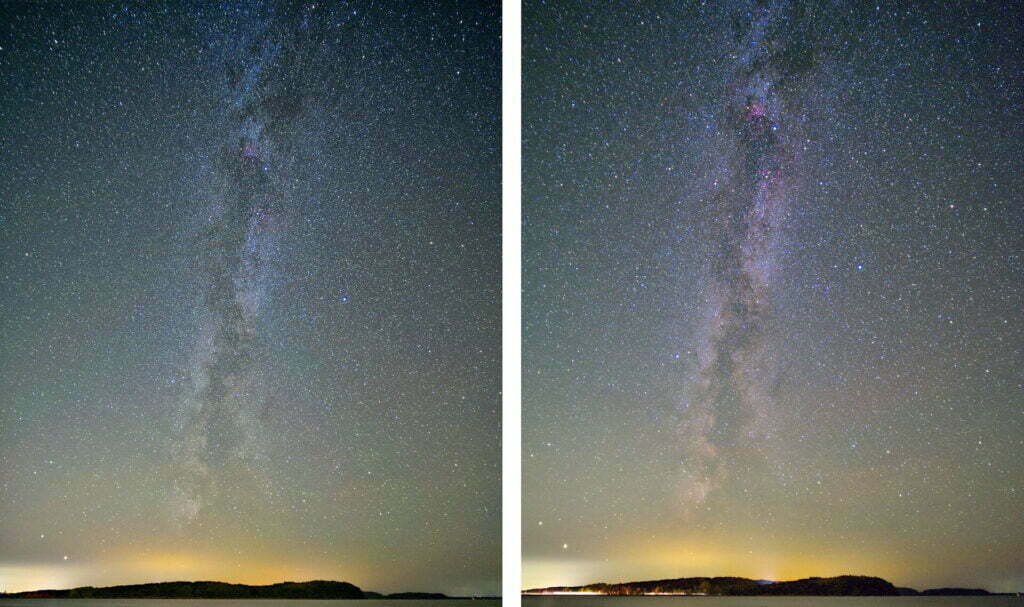
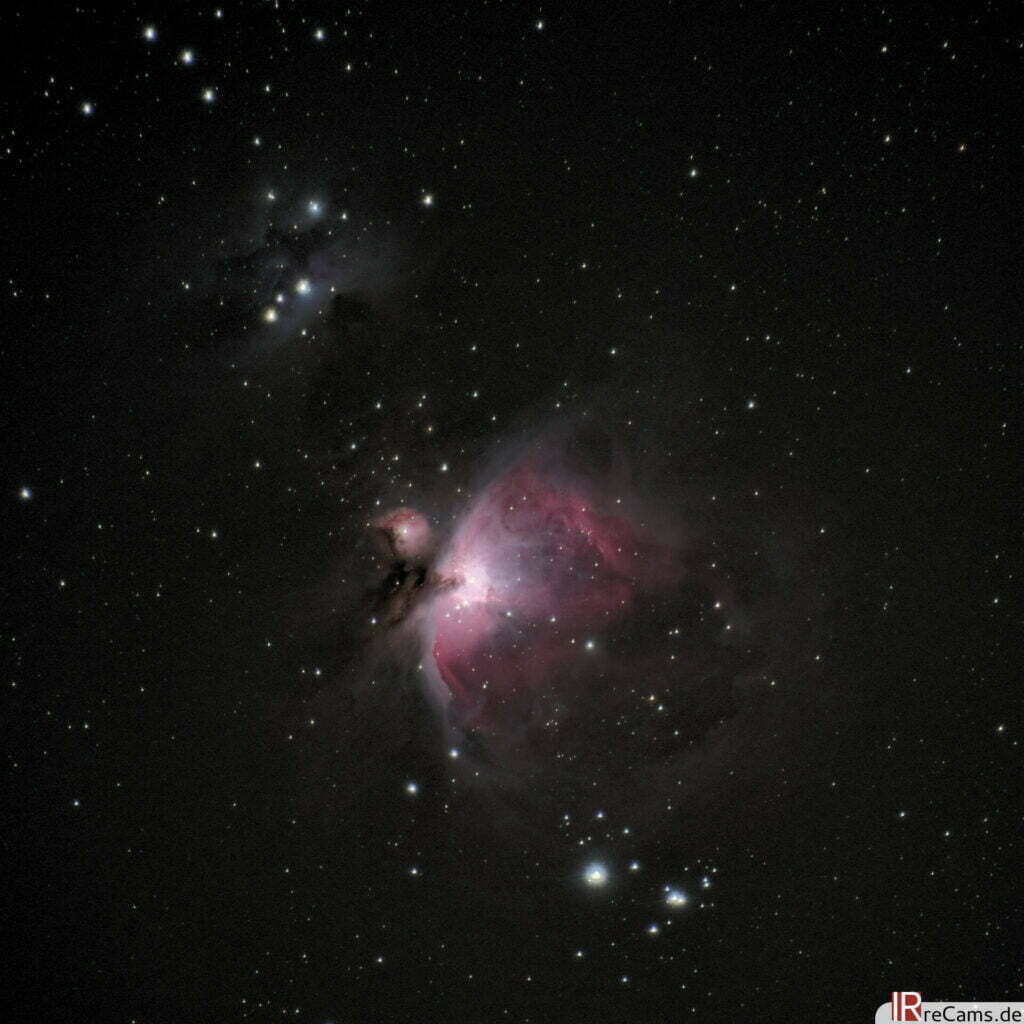
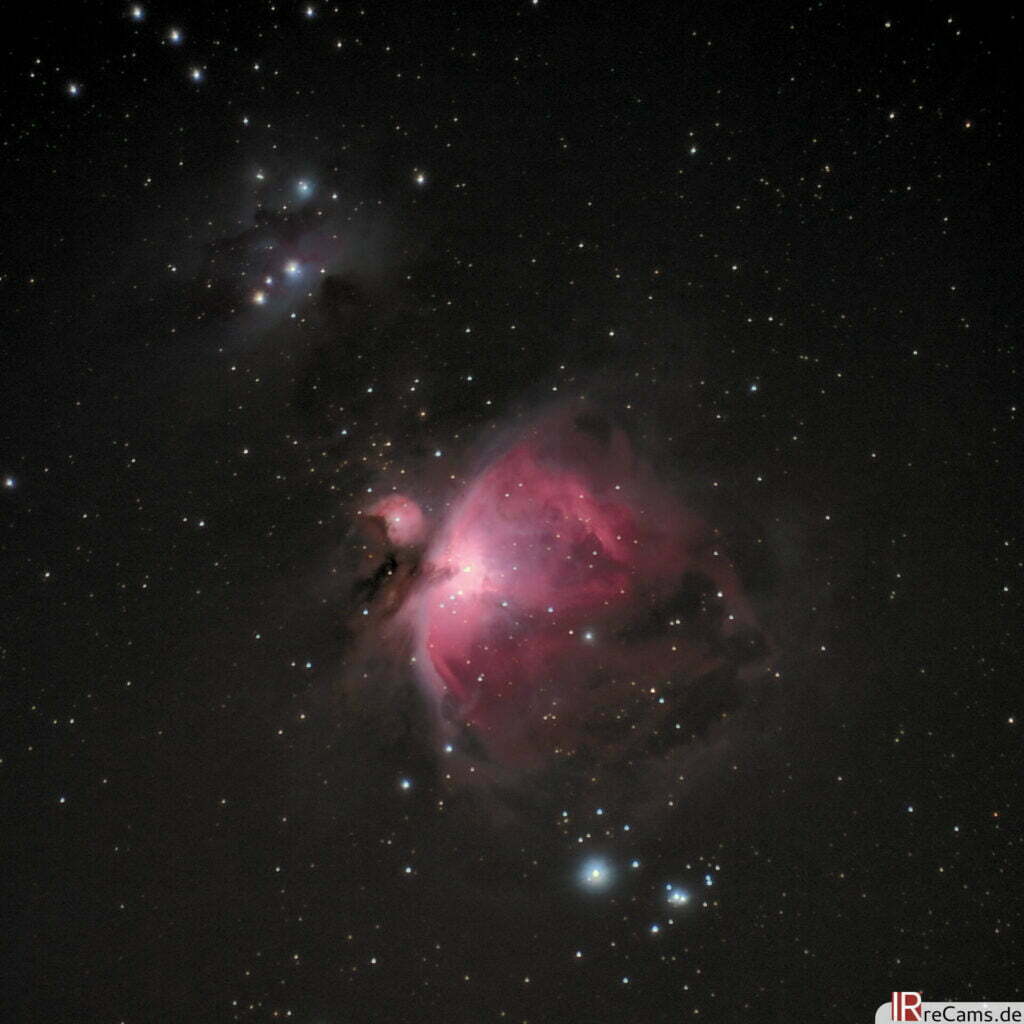
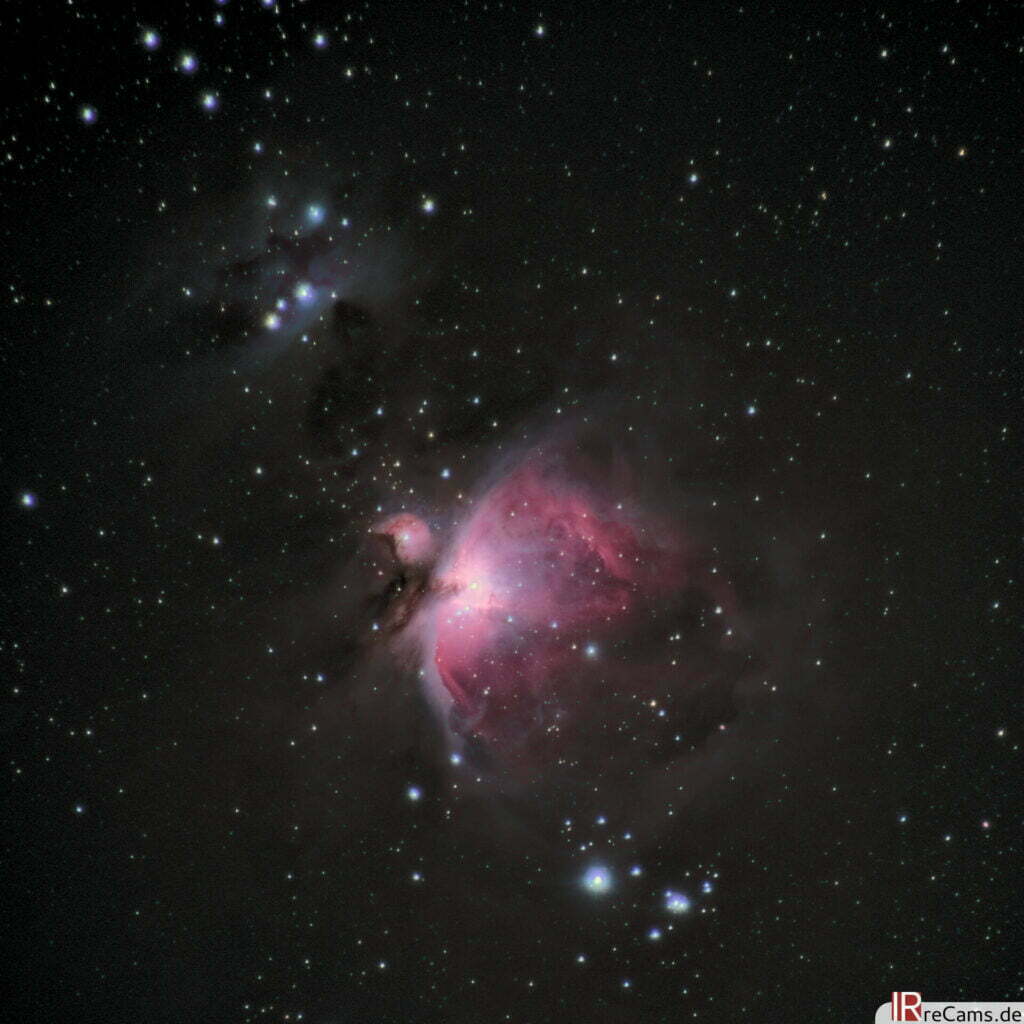
Which filters are suitable for an H-alpha conversion?
For astrophotography a pure IR camera with e.g. 630 nm infrared filter is not the best choice. Of course, after the conversion, the cameras are sufficiently sensitive to be able to capture the stars at night, and they also see the H-alpha regions of the spectrum. However, as described at the beginning, astrophotography is typically interested in imaging the natural conditions. But if you want to hunt for stars with an infrared camera, I don't want to stop you at all.
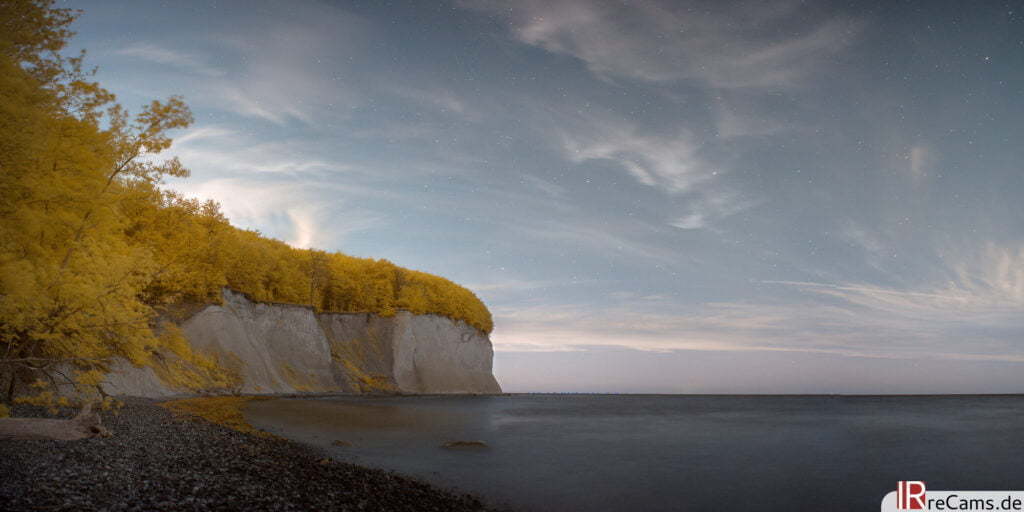
Full spectrum conversion for astrophotography
A Full Spectrum conversion with 280 nm long pass filter opens the camera for the complete spectrum from UV to IR, including the H-alpha range. Such a camera can be operated without additional filters with an actual gain in sensitivity. On the other hand, one is very flexible and can use pre-screw filters on the lens or telescope to narrow the spectrum. Multispectral imaging with narrow bandpass filters and rather scientific analyses become possible, you really have the maximum freedom with such a camera.
However, the colors produced by a Full Spectrum camera are clearly "off" due to the mixture of various wavelengths and require extensive post-processing if no additional filters are used. With long focal lengths and telescopes, this is usually relatively easily corrected by white balance. In addition to the shifted colors, other weaknesses of the lens will present themselves. UV and IR light, which hit the sensor in certain proportions, are diffracted to different degrees. Simple put, an increased amount of chromatic aberration and color fringing is to be expected, which is why "naked" photography without additional filters is problematic.
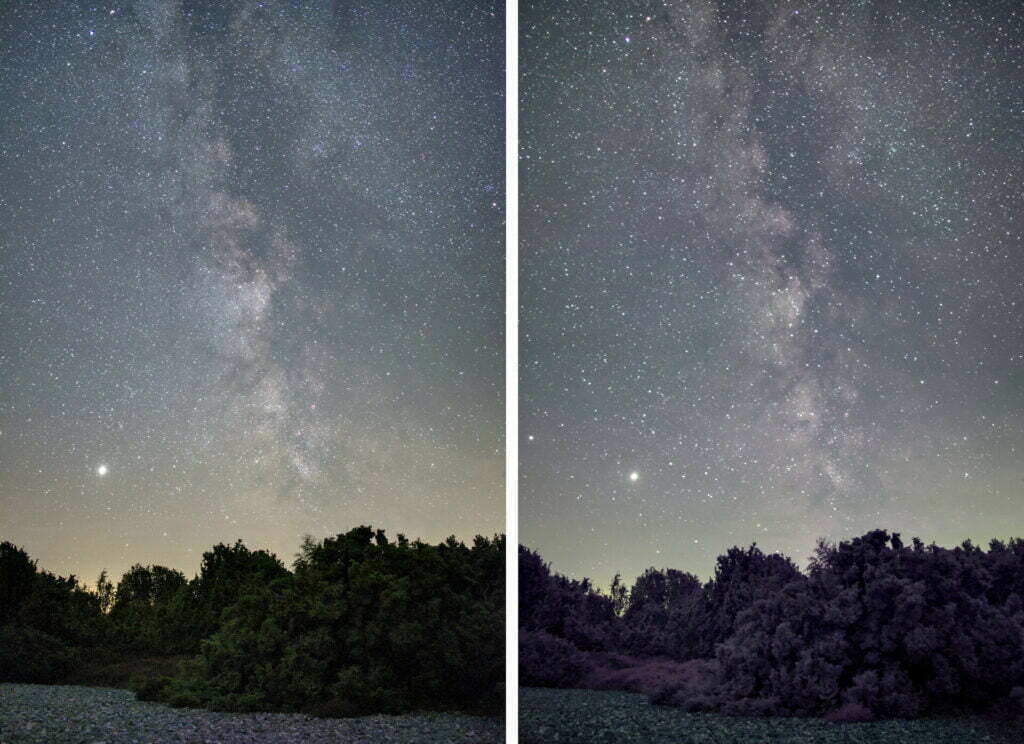
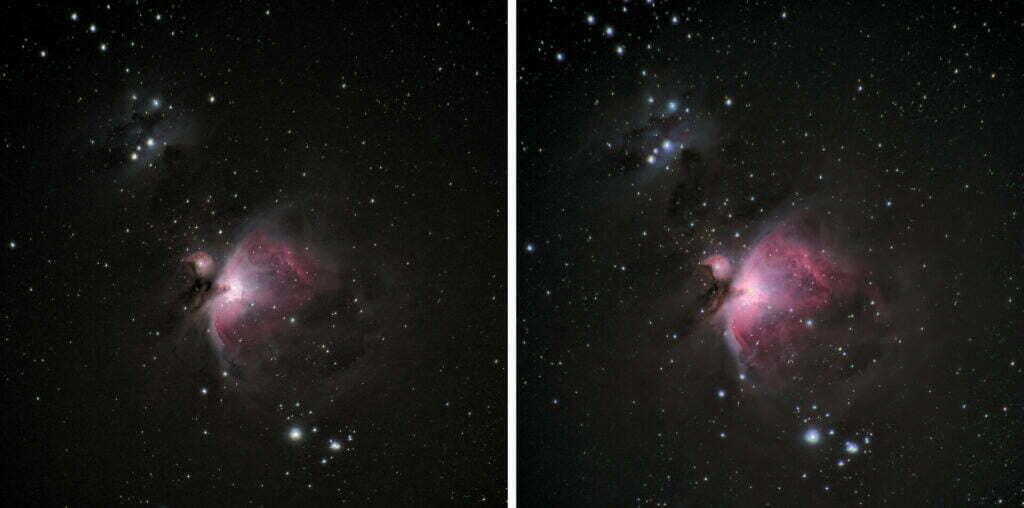
However, as soon as wide-angle lenses are used, there are further problems - mainly because of the omnipresent light pollution. This gets a greenish tint with a full spectrum camera, instead of the usual yellow-orange hue. In addition, depending on the light pollution in the immediate surroundings, a distinct purple coloration of the vegetation can occur.
For nightscapes with wide-angle lenses, I cannot recommend a Full Spectrum conversion unless a additional Clip-In filter is used (more on this in the next section). However, using it on a telescope can be useful, especially with additional filters.
Camera construction with a "real" Astro filter
A "real" Astro filter, also called a luminance filter, is a UV/IR blocking filter that only allows the visible spectral range to pass, just like the original blocking filter. However, the Astro filter is open a little longer in the near infrared range, allowing the H-alpha spectral range to reach the sensor unimpeded. Quality is of course the highest premise here as well, we use the Astrofilters of the company Optolong for our Astro Modifications.
A "real" astro filter has almost no problems with chromatic aberrations, because no UV or infrared areas enter the optical path. Furthermore, there is no untypical discoloration of the sky or vegetation due to light pollution, the landscape in the image appears natural and balanced. Of course, there is a color shift into red, but this can be corrected quickly and easily with a simple white balance - even with wide-angle lenses.
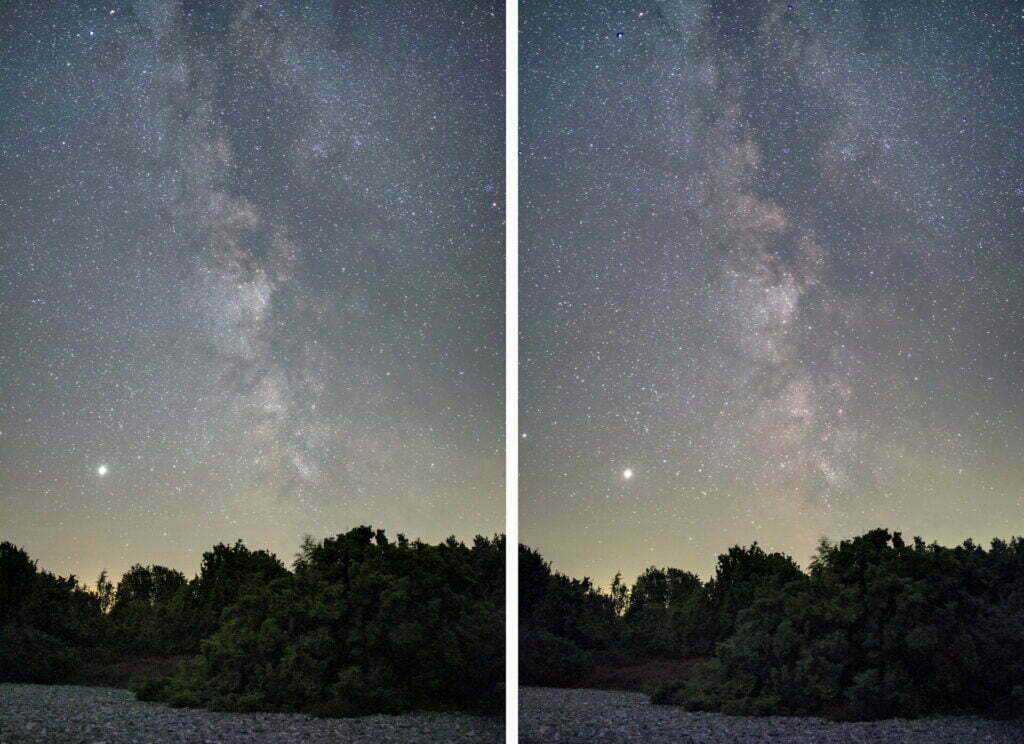
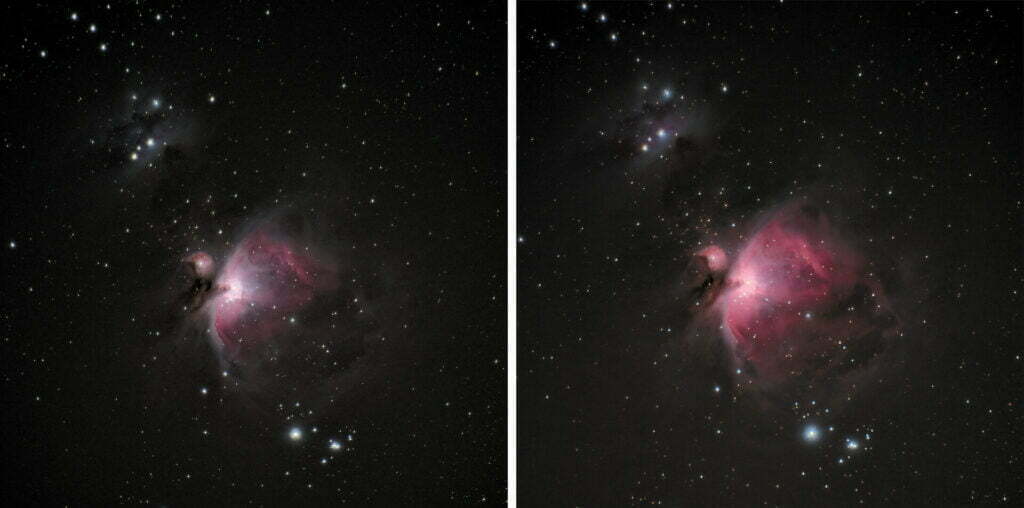
All in all, the Astro filter has practically eliminated all the disadvantages of a full spectrum conversion (even if no increased overall sensitivity can be observed per se). However, one important disadvantage remains: These filters are relatively expensive and come with additional cost compared to a Full Spectrum camera. If you plan to buy more (bandpass) filters anyway, it would be cheaper with a full spectrum conversion, at least for the work on the telescope.
Last but not least, there is an excellent way to use a full spectrum camera at night as an Astro camera (and as an Infrared camera during the day): With Clip-In Filters. These are small filters that are attached directly in the bayonet between the lens and the sensor. Astro filters unfortunately do not work in front of the lens with wide-angle lenses (under 50 mm KB equivalent), so these filters must definitely be placed in front of the sensor. Excellent Clip-In filters can be ordered e.g. from the company Astronomik (Unfortunately not yet available for all camera manufacturers).
Which camera is best for a Astro conversion
Just like for an Infrared conversion, the following applies to an Astro conversion: The sensors of all manufacturers are practically identical in terms of their sensitivity in the H-Alpha spectral range. Much more interesting and important is the noise behavior and the dynamic range of the sensor - after all, we shoot in very dark light conditions with high ISO values. This is not much of a challenge for all cameras that have come onto the market since the mid-2010s. Unfortunately, older cameras will have a hard time in this discipline. So in short: Every reasonably modern camera is suitable for an Astro conversion.
However, there is a technical limitation, which is why not all cameras from the pricelist are available in the Shop for a Astro conversion . There are cameras that have an infrared LED installed internally, often this is part of the shutter mechanism. The stray light of these LEDs disturbs the image during a night shot and makes it unusable in the worst case. This problem affects e.g. all Sony Alpha 7 cameras of the 2nd generation, which is why they are not selectable for an Astro conversion.
